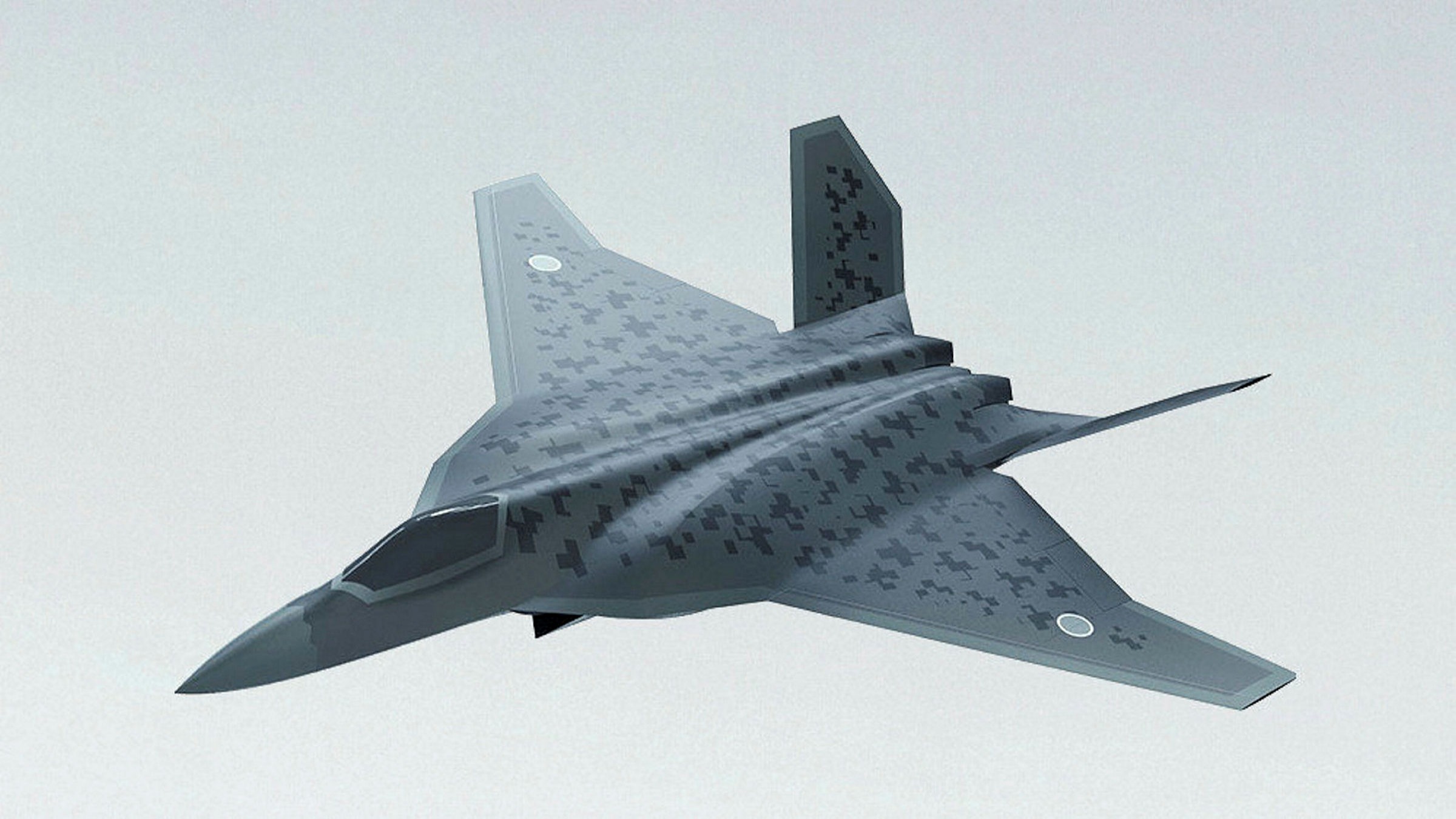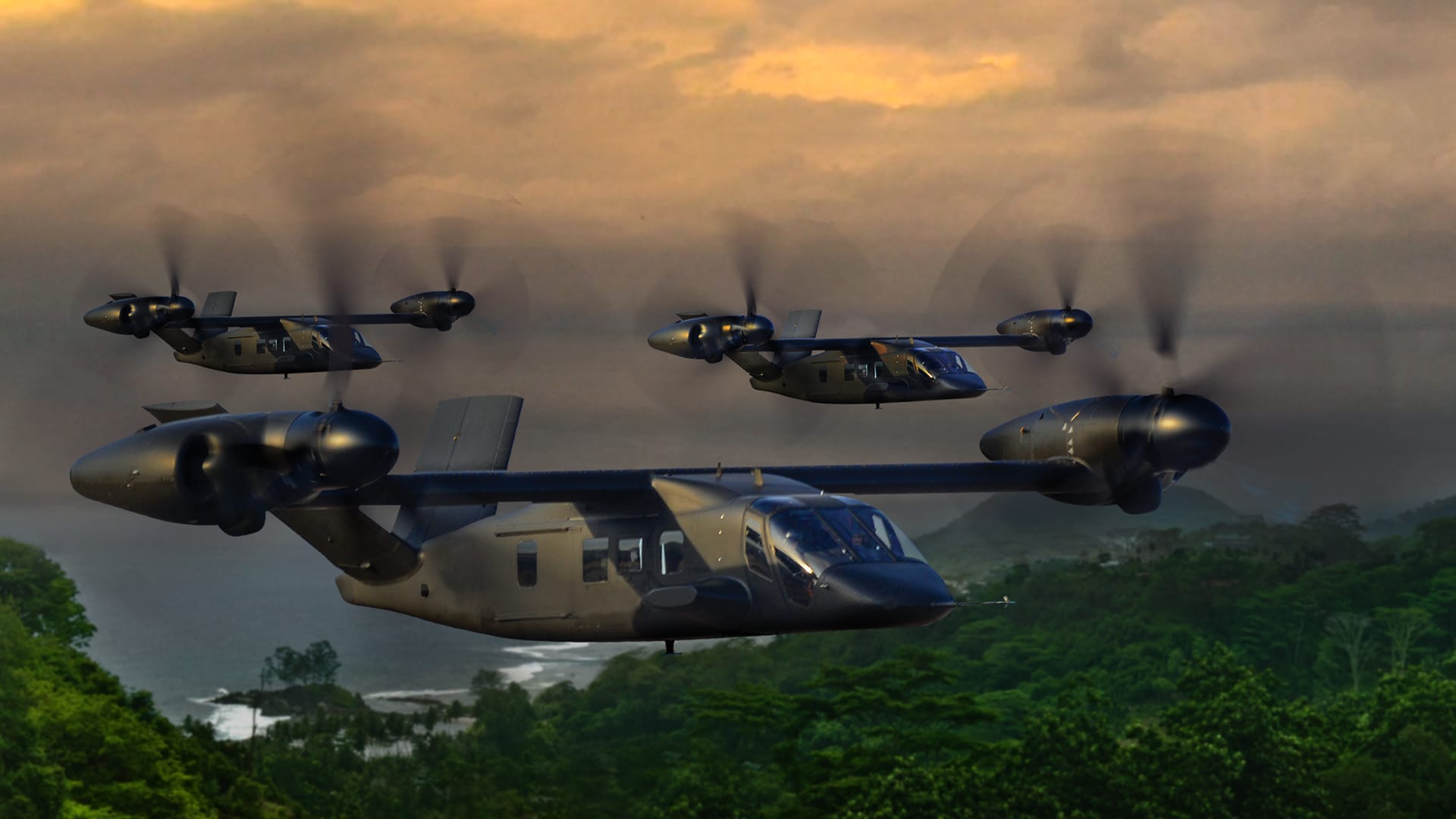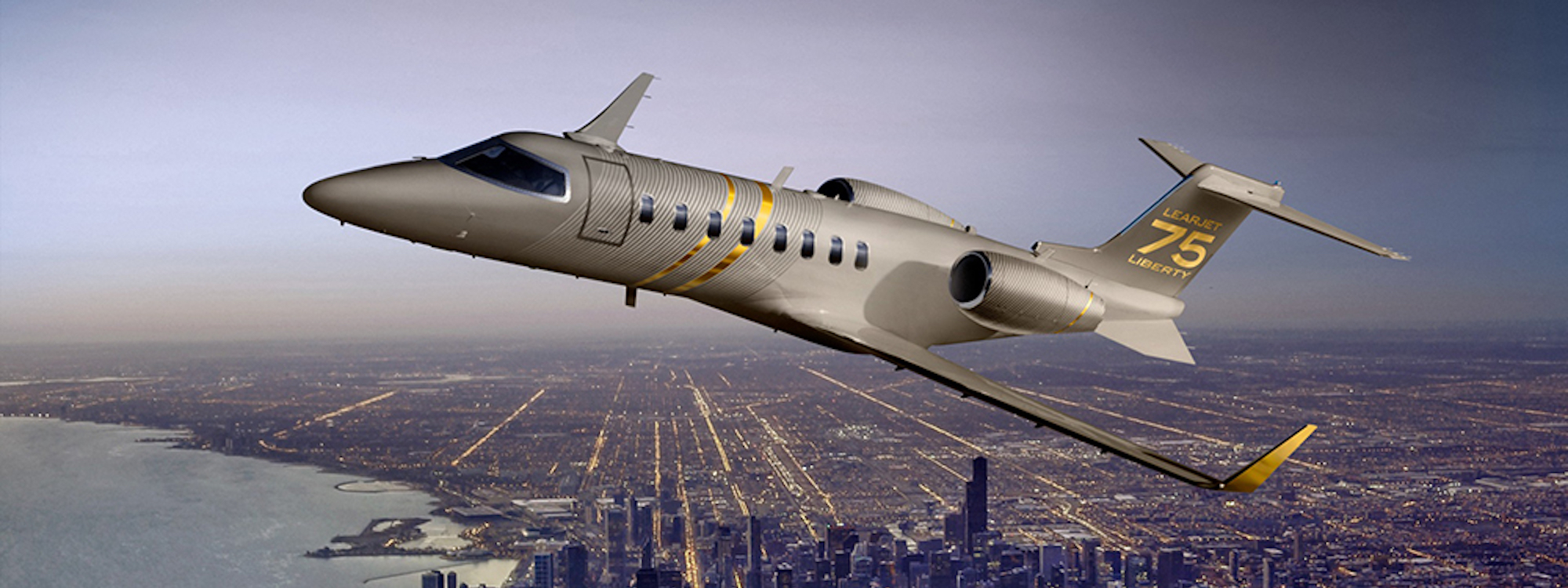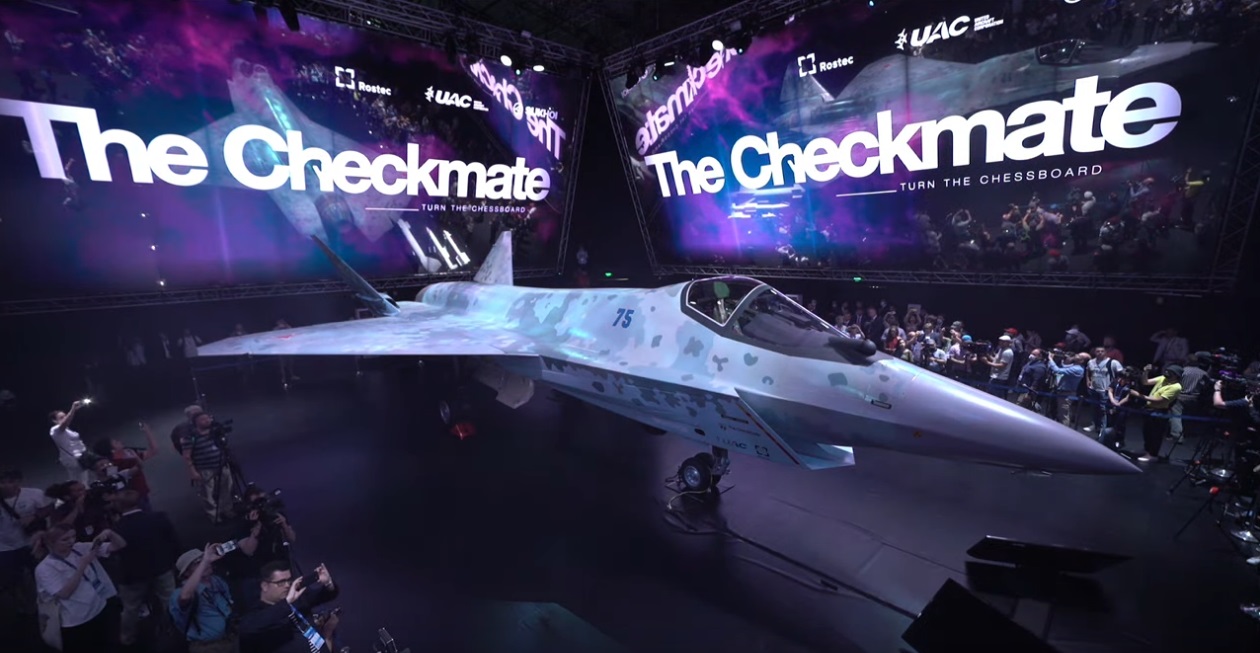InterGlobe Aviation, the parent company of IndiGo airline, on Tuesday, March 29 appointed Gaurav Negi as the Chief Financial Officer (CFO) in place of Jiten Chopra who has put in his resignation, a statement said.
Before joining IndiGo, Negi spent 22 years with General Electric Company, where he was part of their Global Leadership programmes in finance and executive management, said the InterGlobe Aviation's statement that was posted on BSE.
Gaurav Negi succeeds Jiten Chopra as CFO of IndiGo
"In his last role with GE, Mr Negi was the CFO for onshore wind (segment of GE Renewable Energy headquartered in Paris, France), APAC and Non-Executive Director, GE Transmission & Distribution (GE T&D) India," it added.
Mr Negi had joined IndiGo as Senior Vice President and Head -- Governance, Risk and Compliance (GRC) on December 1, 2021. Mr Negi is a Commerce graduate from Hindu College, Delhi University, and a Chartered Accountant from the Institute of Chartered Accountants of India.
IndiGo, is an Indian low-cost airline headquartered in Gurgaon, India. It is the largest airline in India by passengers carried and fleet size, with a 53.5% domestic market share as of October 2021.
It is also the largest individual Asian low-cost carrier in terms of jet fleet size and passengers carried, and the sixth-largest carrier in Asia with over 6.4 crore passengers carried in the financial year 2018–19.
The airline operated 1,500 daily flights as of 2019 to 96 destinations – 71 domestic and 25 international. It has its primary hub at Indira Gandhi International Airport, Delhi.
The airline was founded as a private company by Rahul Bhatia of InterGlobe Enterprises and Rakesh Gangwal in 2006. It took delivery of its first aircraft in July 2006 and commenced operations a month later. The airline became the largest Indian carrier by passenger market share in 2012.
Read next
Deepening their partnership, Boeing and Microsoft to collaborate again in digitizing aviation
Prashant-prabhakar
10 Apr 2022
Technology and aviation go hand in hand and Boeing just took this initiative a notch higher-collaborating with Microsoft to update its critical infrastructure, streamline business processes and accelerate innovations in digital aviation.
Automation and digitization have taken off ever since the advent of computers with the aviation industry now looking to deploy artificial intelligence to take over seemingly mundane and complex tasks.
Representative | FlightGlobal
Reportedly, as a part of strengthening their partnership, Boeing will be looking to leverage Microsoft Cloud and its Artificial Intelligence (AI) capabilities to use data-driven approaches to update technology infrastructure and mission-critical applications.
Representative | Aviation Today
Today’s announcement represents a significant investment in Boeing’s digital future. Our strategic partnership with Microsoft will help us realize our cloud strategy by removing infrastructure restraints, properly scaling to unlock innovation and further strengthening our commitment to sustainable operationsBoeing's Chief Information Officer and Senior Vice President of Information Technology & Data Analytics, Susan Doniz, said on April 6 during the announcement of the venture
Susan Doniz | The Business Journals
Microsoft as a company has been carbon neutral since 2012. Apparently, it also runs a program called 'AI for Earth'-that awards grants to support projects that use AI to change the way people and organizations relate to the planet and the natural world.
The implementation of AI in data optimization is touted to have great potential, beyond more obvious applications such as fuel efficiency, in slashing aviation's overall environmental impact.
Artificial intelligence is coming with a fast pace and being adopted widely, including in the aviation domain. While the concept of AI has been in existence since the 1950s, its development has significantly accelerated in the last decade due to three concurrent factors: the capacity to collect and store massive amounts of data, the increase in computing power, and the development of increasingly powerful algorithms and architectures.Jean-Marc Cluzeau, principal advisor to the European Union Aviation Safety Agency (EASA) Executive Director, stated during the December 2020 Global Symposium on the Implementation of Innovation in Aviation hosted by the International Civil Aviation Organization
Boeing and Microsoft have been collaborating for more than two decades and Boeing was among the first aerospace proponent to leverage the Microsoft Cloud, centralizing many of its market-leading digital aviation applications on Microsoft Azure and using artificial intelligence to drive customer outcomes and streamline operations.
Microsoft
The power of the Microsoft Cloud and its AI capabilities will serve as the core component to Boeing’s digital aviation strategy by providing flexible, agile and scalable solutions that are intelligent and data driven on a secure and compliant platformsaid Judson Althoff, EVP and chief commercial officer at Microsoft
SOURCE(s)
COVER: To70
Read next
The Mitsubishi F-X | what's the buzz behind this 6th generation stealth fighter?
Prashant-prabhakar
09 Apr 2022

Tokyo has reportedly given the go-ahead for the development of its own domestically designed sixth-generation Mitsubishi F-3 air-superiority stealth fighter. Touted to be Japan's next-gen fighter jet, it is also said to feature advanced technology - unseen in U.S. planes, including a virtual reality-style helmet and microwave weapon to annihilate enemy missiles.
Representative | Asia Times
While the maiden flight is planned for 2028, the prototype is expected to roll out by 2024, and full-scale production is slated for 2031.
Here's what we know so far.
The inception of the Mitsubishi F-X
The Mitsubishi F-X (unofficially called F-3 or Godzilla), is Japan's first domestically developed stealth fighter jet, touted to replace the older F-2 fighter in the Japan Air Self Defence Force (JASDF).
Mitsubishi F-3 Prototype Stealthy Multi-Role Fighter | The Aviationist
The F-2, developed in collaboration with Lockheed Martin (1990s), is the larger, more expensive version of the American F-16 Fighting Falcon.
The development of the fight craft was deemed necessary in response to its neighbour's cutting-edge aerial assets and air supremacy-especially China and Russia.
The F-X program began with the United States banning the exports of the Lockheed Martin F-22 Raptor as part of the 1997 Obey amendment to safeguard its technology.
Representative | Popular Mechanics
Much of the development of the F-X program builds on the model of the Mitsubishi X-2 Shinshin. Although X-2 was just a tech demonstrator and not a prototype for an actual fully-equipped fighter plane, it made its maiden flight in 2016 and concluded tests in 2018.
Japanese X-2 stealth about to take off | Key Aero
Design | Tech and specs
From what is known, the F-X will be a twin-engine stealth fighter designed for achieving air superiority and would incorporate all features deemed necessary to classify it as a sixth-generation fighter jet.
Conceptual design of the F-X
Stealth and avionics
To minimize radar cross-section (RCS), F-X physical design features serpentine air ducts and an internal weapons bay. Electromagnetic wave absorbers made of carbon-based material are applied to the air ducts and engines to reduce the amount of radar reflection. Additionally, the fighter craft will feature plasma stealth antenna technology to deflect radio waves- wherein the antennae will create temporary plasma using characteristics of plasma that can alter physical properties through electrical control.
Integrated sensors including an active electronically scanned array(AESA) radar, passive radio frequency (RF) sensor, and an infrared camera will be incorporated to improve detection against stealth aircraft.
Cockpit instrumentation
Designers have considered featuring an F-35 style Helmet Mounted Display system combined with a single large liquid-crystal display. Furthermore, artificial intelligence using the man-machine interface is also being developed to streamline data flow and reduce pilot task loads.
F-35 Helmet Mounted Display | Representative | clearancejobs
Engine
The F-X will be powered by two XF9 engines, with official thrust ratings of 24,000 lbf (in military thrust) and 33,000 lbf with an afterburner.
XF9-1 on a test run | Wikipedia
Reportedly, Japan’s defence ministry has been working on a three-dimensional thrust vectoring nozzle which redirects the engine’s thrust up to twenty degrees in any direction- clearly suggestive of the fact that Japan truly wants the F-3 to stand tall alongside its rivals- the American F-35 and the Russian Su-35.
2D vs 3D thrust vectoring | Representative | Source
Additionally, scientists at the defence ministry have also been working on high-speed-data-links that could network sensors and exchange targeting data with friendly forces- most likely through Link 16 secure data transfer system.
The fighter craft is also said to feature EMP-resistant fibre-optic fly-by-wire (FBW) avionics and ‘self-repairing’ flight systems that automatically detect and fix the damage(s) to an aircraft’s control surfaces.
It might also feature an "Integrated Fire Control for Fighters" (IFCF) system-wherein Japanese (and possibly U.S) fighters could pool together their sensor and missile targeting capabilities, enhancing the accuracy of beyond visual range missiles.
The F-X’s microwave weapon- which is likely to be a function of the nose-mounted radar system, could be used to fry circuitry in hostile ballistic missiles.
Directed Energy Weapons (DEW) or Microwave Weapons | Representative | Nature
While the landing systems are reported to be developed by Subaru, the F-X is also touted to be able to control up to three drone-like "loyal wingmen" craft, or "Combat Support Unmanned Aircraft".
In October 2020, Mitsubishi Heavy Industries was selected as the lead developer of the fighter program.
6th generation fighter crafts are, at the moment, conceptual and most of the proposed models are experimental at best. Nevertheless, the efforts seem to continue to get these models to the skies.
The UK's future "Tempest" stealth program and the European Future Combat Air System (FCAS) are some noteworthy examples.
Tempest | Representative | Aviation International News
SOURCE(s)
COVER: Financial Times
Read next
Bell V-280 Valor | how unmanned helicopters are taking modern warfare to the next level
Prashant-prabhakar
08 Apr 2022

Touted to be the only FVL (future vertical lift) weapons system with the flight-proven agility, speed, range and endurance for the Future Long-Range Assault Aircraft mission, the Bell V-280 Valor is a tiltrotor aircraft being developed by Bell and Lockheed Martin for the US army.
Rotor and Wing International
The V-280 derives its name from its cruising speed of 280 knots (320 miles per hour)-nearly twice the maximum speed of an average military helicopter.
Tech and specifications
Combining the speed and range of a turboprop, with advanced agility greater than a traditional helicopter, the Bell V-280 Valor offers better flight performance and lifecycle sustainability.
The V-280 has “the element of surprise and survivability, coupled with an ability to show low-speed agility within the landing zone. You get the best of a helicopter and the best of a turboprop airplane. You can start in helicopter mode and then convert the rotors out onto the wings. Riding the wings is what can really make a difference and give you speed and rangeA senior Bell developer told the National Interest
Validated by numerous flight tests, the aircraft demonstrates exceptional raw control power in pitch, roll, and yaw manoeuvres, performing at the highest standards for agility.
Fixed engine nacelle design translating to reduced manufacturing costs, better performance, maintainability and sustainability - all designed to reduce warfighter workload.
It differs from the earlier V-22 Osprey tiltrotor in that the engines remain in place while the rotors and drive shafts tilt. It also boasts a greater combat range of 520 to 920 miles, depending on loadout.
Bell Boeing V22 Osprey | Wikipedia
Crew4Capacity14 troopsLength50.5 ft (15.4 m)Height23 ft 0 in (7 m)MTOW30,865 lb (14,000 kg)Powerplant2 × General Electric T64 turboshaftPropellors35 ft 0 in (10.7 m) diameterCombat range580–920 mi (930–1,480 km)Service ceiling 6,000 ft Cruise speed320 mph (520 km/h)Wikipedia
T64-GE-7 installed on Sikorsky CH-53G helicopter | Representative | Wikipedia
The V-280 has achieved several milestones ever since its maiden flight in 2017.
Maiden flight | Bellflight
A brief timeline of its test flights
In April 2018, it ran for 75 hours on the ground and flew for 19 hours, attaining 80 knots, before transitioning to airplane flight by the end of the month.
August 2018 | 200 KTS Level Flight | Representative | Bellflight
By October 2018 it had reached 250 kn, after 155 hours of rotor turn time and 70 flight hours.
After about a year of flight years, it finally reached its 280-knot mark in January 2019.
January 2019 | Level 1 agility-attitude quickness | Representative | Bellflight
In December 2020, the V-280 reached 305 kn, after having flown for over 200 hours.
Autonomy demo | Representative | Bellflight
Artificial Intelligence taking over flight crew
In December 2019, Bell showcased the V-280 Valor tilt-rotor demonstrator aircraft, which accomplished an entire test mission solely based on computer algorithms and sans human input(s).
https://www.youtube.com/watch?v=sfgRL9j0uS8
Bell’s V-280 Valor on its second to last demonstration flight on April 15, 2021, at the company’s Flight Research Center in Arlington, Texas | Defense & Aerospace Report
The following tasks were performed by the software which would otherwise be normally expected in routine non-combat missions without human input, although a human operator would be present onboard:
Vertical take-off in “helicopter” mode, with the V-280’s propellers, tilted upward serving as rotors.Transitioning the rotors to horizontally oriented “airplane mode” with greater speed and fuel efficiency.Cruising towards multiple waypoints in horizontal flight mode and hovering above a certain waypointTilting the rotor back to vertical and landing helicopter-style at a destination
Reportedly, further tests would likely be successful in seamlessly integrating those tasks in one continuous autonomous flight operation.
Although notorious for crashes and being a bit on the higher side when it comes to costs, tiltrotors combine the manoeuvrability and vertical takeoff and landing abilities of a helicopter with superior speed, high-altitude performance and fuel efficiency of a fixed-wing airplane.
If the company's tests are anything to go by, it is only suggestive of the fact that unmanned capabilities may increasingly become a standard feature in platforms that aren’t even intended for use as drones in the first place.
SOURCE(s)
COVER: Bell Flight
Read next
End of an era-Bombardier ends Learjet production with a final delivery
Prashant-prabhakar
06 Apr 2022

What goes up must come down- this couldn't be more true with Learjet, which became synonymous with the lifestyles of the rich and famous, has now come to the end of the line.
Honeywell Aerospace
Among the first private luxury planes to be built, Learjet had evolved across its seven-decade existence, to develop into the iconic household name it is today.
A brief history
The Learjet was designed by William (Bill) Lear, an inventor and aviation businessman.
William Lear | Missouri Highway 36
The first Learjet- the Learjet 23, rolled off the assembly line in October 1963 and had the capacity to house upto 8 passengers.
Since 1990, Learjet has been a subsidiary of Bombardier Jets and the company has marketed the iconic aircraft as the "Bombardier Learjet Family". The jet's preliminary design inspired by an experimental American military aircraft known as the Marvel, substituting fuselage-mounted turbojet engines for ducted fan turboshaft engines. However, that design was abandoned and the final Learjet design was instead adapted from an abortive 1950s Swiss ground-attack fighter aircraft-the FFA P-16.
Marvel | Representative | Wikipedia
FFA P-16 | Wikipedia
The first Learjet flew in 1963, and more than 3,000 had been built since.
It was sleek and it had almost a fighter-jet pedigree. For its time it symbolized personal executive transportation. Besides, Carly Simon put it into a fantastic song-that cemented its place in popular culturesaid Richard Aboulafia, an aerospace analyst for Teal Group
According to JetNet.com, approximately 3,043 Learjets have been built and of those approximately 2,145 are still in use.
The final Learjet has been delivered
The Northern Jet Management based in Grand Rapids, Michigan, took delivery of the last model of the iconic aircraft- the Learjet 75.
https://twitter.com/Bombardier/status/1508575932356993031?ref_src=twsrc%5Etfw%7Ctwcamp%5Etweetembed%7Ctwterm%5E1508575932356993031%7Ctwgr%5E%7Ctwcon%5Es1_&ref_url=https%3A%2F%2Fwww.flyingmag.com%2Fthe-learjet-era-ends-with-a-final-delivery%2F
Also adding to their fleet is the first and last Learjet 70, the 100th Learjet 40 and the 600th Learjet 45.
Monday the 28th of March 2022 saw the end for one of the most popular business jet families ever. After almost 60 years of production, @bombardier_jets have delivered their final Learjet. @northernjetmanagement had the honor of taking delivery of the Learjet 75, which is the 24 in their fleet.Northern Jet Management posted on its company Facebook page
Apparently, Bombardier now wants to focus on the more profitable planes like the Global and Challenger jets.
That said, it would continue to provide support and maintenance for the Learjets that are still in use.
SOURCE(s)
COVER: air.one
Read next
The Russian Su-75 "Checkmate" - just another case of "Vapor Marketing" or does it live up to the hype?
Prashant-prabhakar
07 Apr 2022

According to Aviation Week and Space Technology - a leading American magazine, the Russian Sukhoi Su-75 Checkmate has made it to the list of top 10 achievements in military aviation in 2021. Reportedly, the Russian, single-engine, light tactical stealth aircraft, grabbed attention owing to its maiden flight as an “unmanned wingman” and the first aerial refuelling performed by an unmanned aerial vehicle.
FlightGlobal
Notorious for hyping their high-grade Russian military equipment in unconventional ways, officials from Russia’s Sukhoi Design Bureau offered bottles of a limited-edition Checkmate "perfume", at the company's unveiling of the aircraft at the Dubai Air Show in December 2021.
So, what really is the hype surrounding, what is touted to be Russia's multi-purpose, stealth fighter-bomber, about?
Fact vs fiction
Priced at less than half of Saab Gripen ($85 million) and substantially cheaper than the US F-35 ($115 million) French Dassault Rafale ($115 million), the Su-75 Checkmate is projected as a low-cost alternative to the Lockheed Martin F-35 Lightning II and Shenyang FC-31 aircraft of the same light to medium-weight category.
F-35 Lightning II Joint Strike Fighter (JSF) | Airforce Technology
The Chinese Shenyang FC-31 | Republic World
A static mock-up was unveiled at the 2021 MAKS Air Show with President of Russia-Vladimir Putin in attendance and the model is touted to be pitched to Turkey, India, Saudi Arabia and any other countries that have been either excluded from or cannot afford the US F-35 programme.
Putin inspecting the new fighter jet at the air show | Creator: SPUTNIK | Credit: via REUTERS
Russia is one of the few countries with full-cycle capacities for the production of advanced aircraft systems. The new product developed by UAC specialists should arouse genuine interest not only in our country, but also in other regions of the world, including our competitors abroadsaid a company spokesperson at the air show
19FortyFive
Reportedly, the Obninsk Research and Production Enterprise “Technologiya”-part of Roste? State Corporation, came up with a solution that it states- improves the characteristics of cockpit glazing by 20%, including reducing the radar visibility of military aircraft.
Representative | Rostec.ru
Today, the samples produced with the upgraded equipment confirmed the pre-calculated characteristics during measurements and tests. The new technology will be used to create structural optics for advanced aviation systems. This will reduce the radar visibility of the aircraft and increase their combat capabilitiesVladimir Artyakov, First Deputy CEO of Rostec State Corporation
Why are countries shying away from considering the Su-75 Checkmate?
Russia has been struggling to manufacture jet engines following sanctions and export restrictions imposed ever since it annexed Crimea in 2014. The recent impositions sanctioned due to the Russian-Ukrainian aggression have only made it worse.
News9Live
After its official debut at the end of last year, there are still many unanswered questions about the Checkmate:
Although touted to be a 5th-generation aircraft by the company, doubts are raised over its advanced avionics and effective stealth technologyProcurement of certain technologies critical for the mass production of its advanced combat sensors with microprocessor sub-systems has been trumped by western sanctionsThe overall success of the "Checkmate" program is questionable given the demand for high-performance medium-weight fighter-bombers is plummetingThe single-seat, twin-engine multirole fighter Sukhoi Su-57 is, reportedly, the Russian Armed Force’s first stealth aircraft, although most western experts opine that it is the least ‘stealthy’ of its fighter generation
The nature of warfare tactics deployed around the world is constantly evolving, with armed drones and ground combat vehicles, costing just a fraction of what these "stealth crafts" cost. Furthermore, countries with a tight budget may naturally give "Checkmate" a pass, regardless of the features it so proudly "claims".
Turkey's Bayraktar TB2 unmanned aerial vehicle destroyed Russian air defence systems and ground combat vehicles in Libya and Nagorno-Karabakh with precision-guided missiles | Representative | Daily Sabah
Also to be noted is the fact that a close analysis of Russian media reveals releases made about the "Checkmate" don't make a mention of "stealth technology" anywhere, and that raises serious doubts about the claims of the "5th generation stealth" aircraft.
According to reports, considering all said and done, it may finally be down to a case of "vapour marketing" and the model just might not actually live up to the hype.
SOURCE(s)
COVER: Sandboxx


Comment